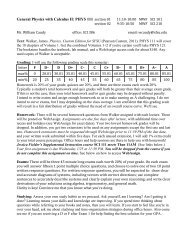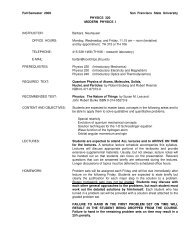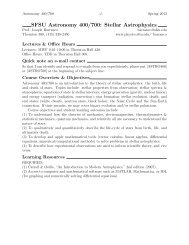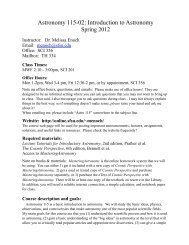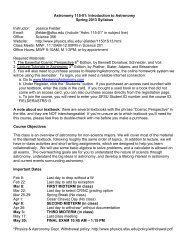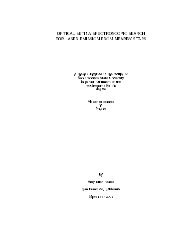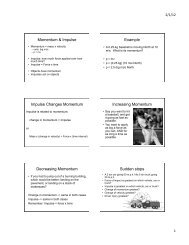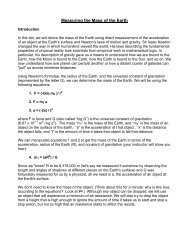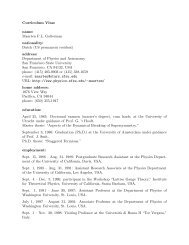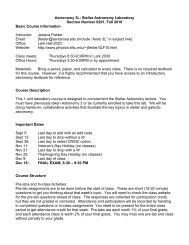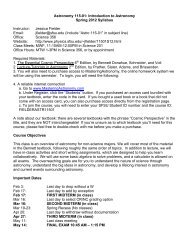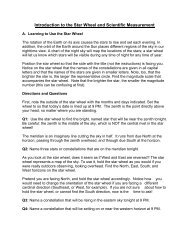Lecture 4 Notes (PDF) - SFSU Physics & Astronomy
Lecture 4 Notes (PDF) - SFSU Physics & Astronomy
Lecture 4 Notes (PDF) - SFSU Physics & Astronomy
Create successful ePaper yourself
Turn your PDF publications into a flip-book with our unique Google optimized e-Paper software.
Example: The Flying Cap<br />
Upon graduation, a joyful student<br />
throws her cap straight up in the air<br />
with an initial speed of 14.7 m/s.<br />
(Neglect air resistance.)<br />
What is acceleration of cap?<br />
(a) When does cap reach its highest<br />
point?<br />
(b) What is the distance to the<br />
highest point?<br />
(c) Assuming the cap is caught at<br />
same height it was released, what is<br />
total time cap was in flight?<br />
1. Draw the cap (as a dot) in its<br />
various positions.<br />
21<br />
2. (a) Use the time, velocity and acceleration relation.<br />
vx<br />
− v0<br />
x<br />
(0 m/s) − (14.7 m/s)<br />
vx = v0 x<br />
+ ax∆t; ∆ t = = = 1.5 s<br />
2<br />
a −9.81<br />
m/s<br />
x<br />
(b) Use average velocity: v av = v 0 /2 = 7.35 m/s;<br />
∆x = v av ∆t=(7.35 m/s)(1.5 s) = 11.0 m<br />
(c) Up time = down time, so total time is 3.0 s. (see text<br />
for a more complicated method.)<br />
3. The answers have the right units and seem reasonable.<br />
22



